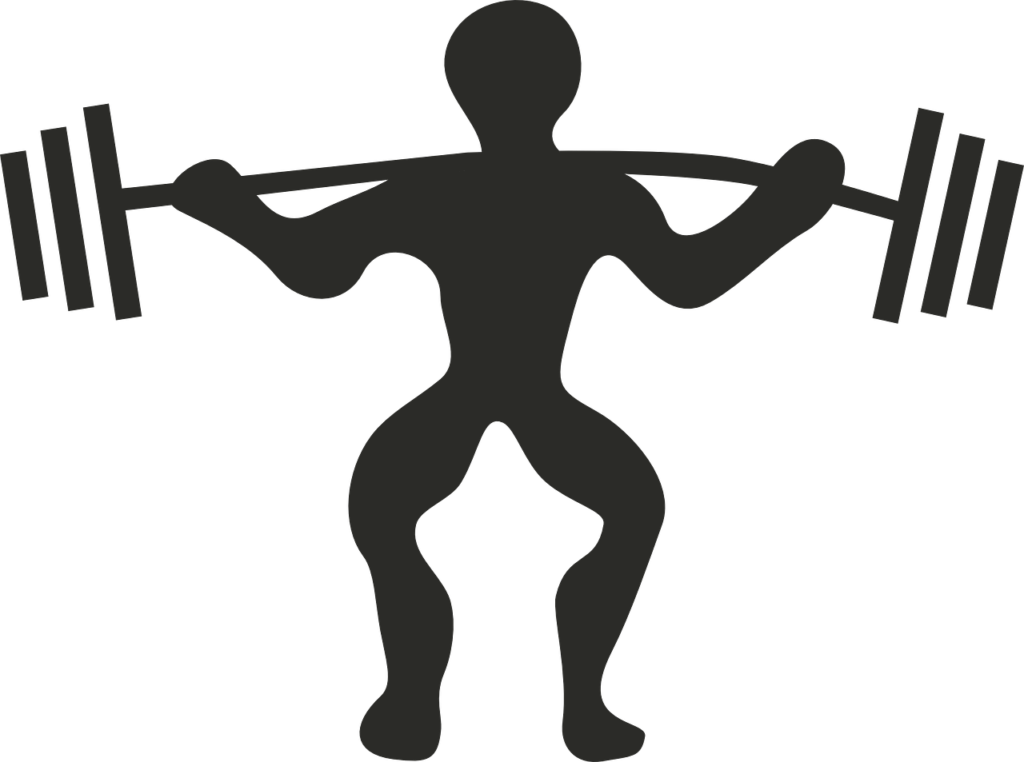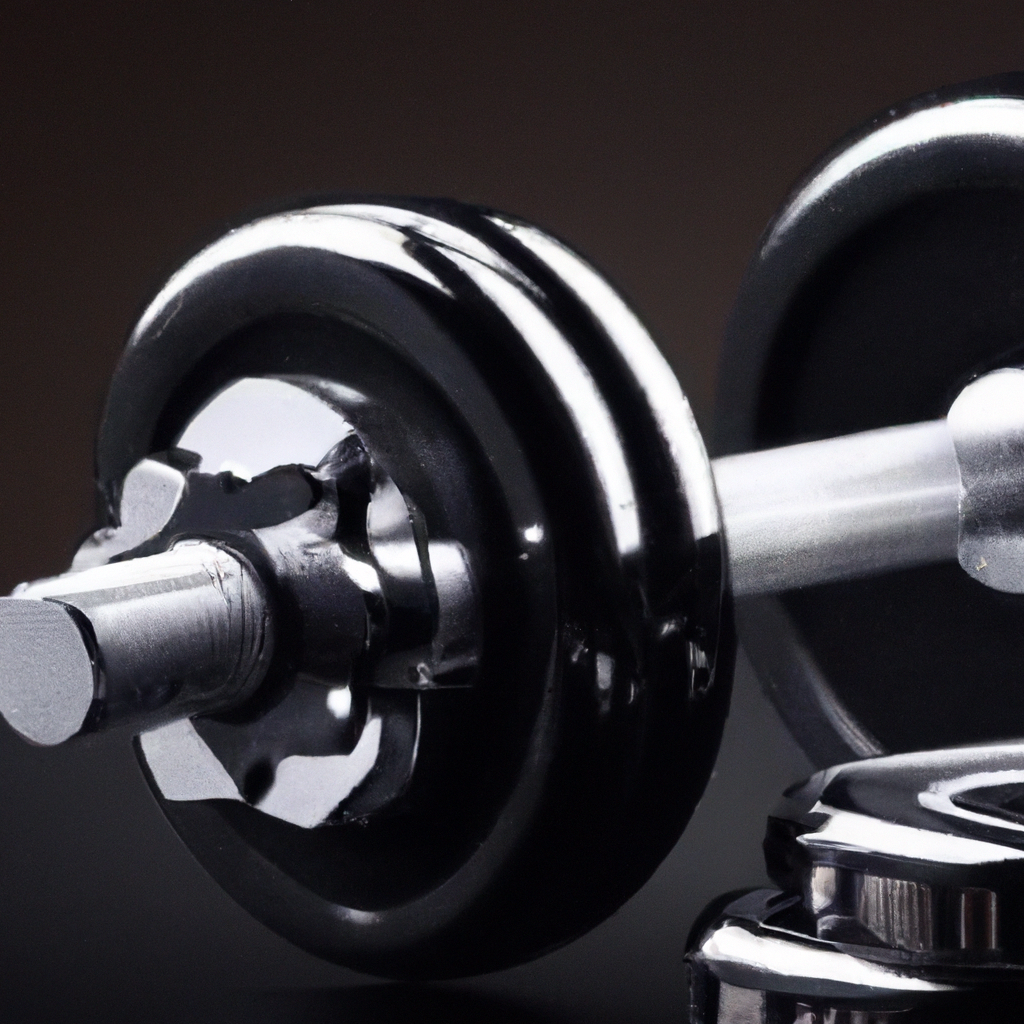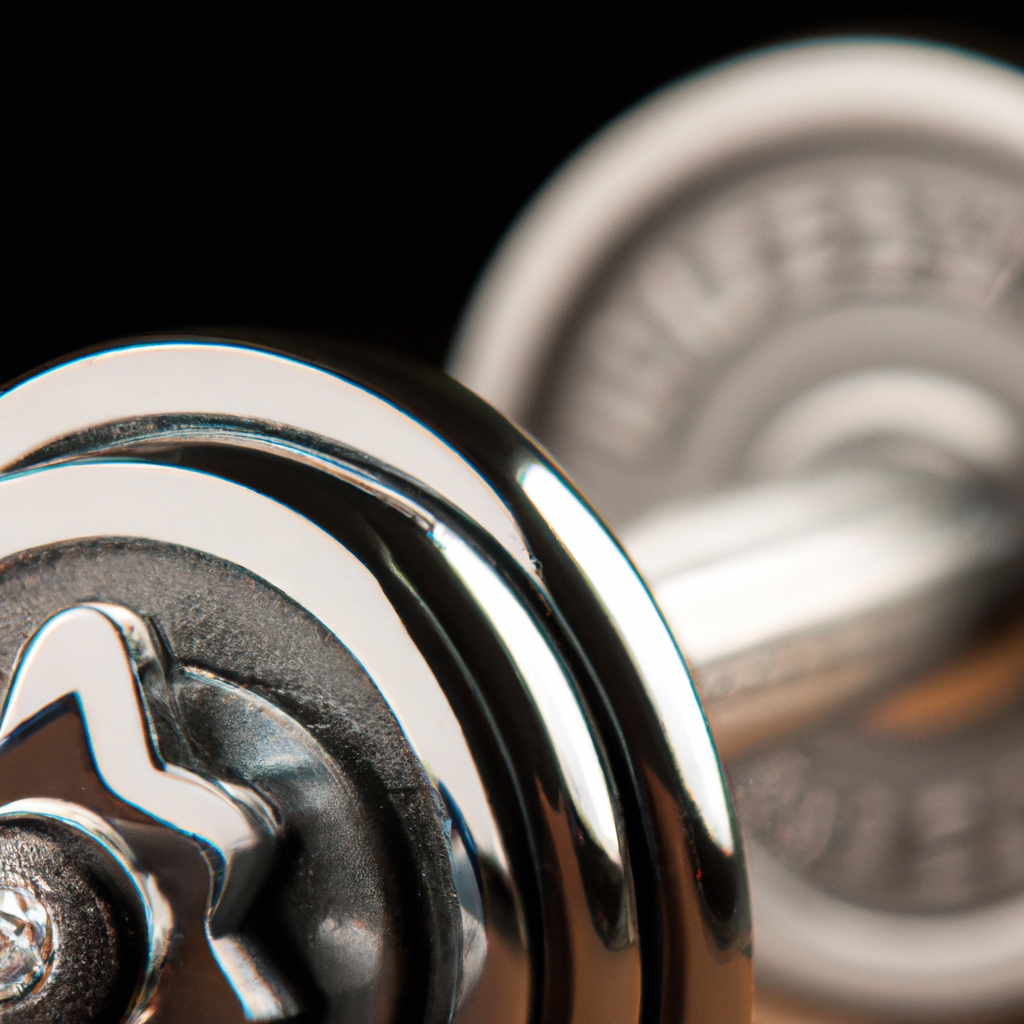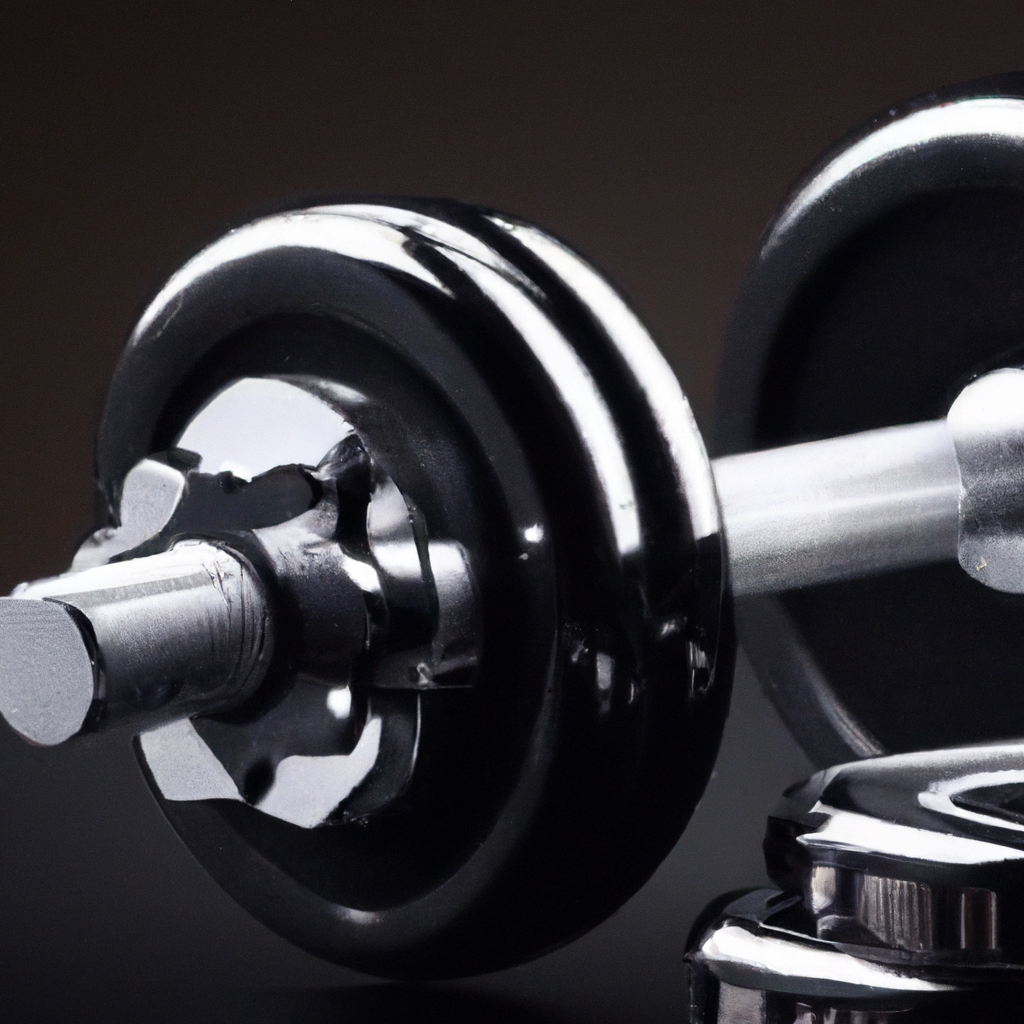If you’re looking to strengthen and tone your chest muscles, dumbbell chest workouts are a fantastic option. With a wide range of exercises to choose from, you can effectively target and challenge your chest muscles using just a pair of dumbbells. Whether you prefer flat dumbbell presses, incline dumbbell flys, or decline dumbbell presses, there’s a workout variation for every fitness level and goal. Not only will these exercises help you build a strong and defined chest, but they also engage other muscle groups such as your shoulders and triceps. So grab those dumbbells, get ready to feel the burn, and discover the many possibilities of dumbbell chest workouts.

Benefits of Dumbbell Chest Workouts
Dumbbell chest workouts offer numerous benefits that can help improve your overall fitness and strength. Whether you’re a beginner or a seasoned fitness enthusiast, incorporating dumbbell exercises into your chest workout routine can provide you with the following advantages:
Increased Muscle Activation
One of the primary benefits of dumbbell chest workouts is increased muscle activation. Unlike using machines that sometimes limit your range of motion, dumbbells allow for a greater range of motion and engage more muscle fibers. This increased activation leads to improved muscle growth and strength development in your chest and surrounding muscles.
Improved Stability and Core Strength
When performing dumbbell chest exercises, you are required to engage your core muscles to maintain stability and balance. This not only helps to strengthen your core, but it also contributes to better posture and spinal alignment. By incorporating dumbbell chest workouts into your routine, you can enhance your overall stability and core strength.
Versatility and Variety
Dumbbells provide a wide range of exercise variations and can target different angles of your chest muscles. From flat bench presses to incline and decline exercises, you have the flexibility to switch up your workouts and challenge your muscles in different ways. This versatility helps prevent plateaus, keeps your workouts interesting, and promotes overall muscle development.
Targeted Muscle Isolation
Another advantage of dumbbell chest workouts is the ability to isolate specific muscle groups. Dumbbell exercises allow you to focus on specific muscles in your chest, such as the pectoralis major and minor, without relying heavily on assistance from other muscle groups. This targeted muscle isolation helps to improve muscle imbalances and overall chest development.
Enhanced Range of Motion
Dumbbell chest exercises provide a greater range of motion compared to barbell exercises or machines. This increased range of motion allows for greater stretch and contraction of the chest muscles, leading to better overall muscle development and flexibility. By incorporating dumbbell workouts into your chest routine, you can enhance your range of motion and maximize your chest muscle engagement.
Choosing the Right Dumbbells
When it comes to dumbbell chest workouts, choosing the right dumbbells is crucial for achieving optimal results and preventing injuries. Here are some factors to consider when selecting the appropriate dumbbells for your workouts:
Determining Your Fitness Level
Your fitness level plays a significant role in determining the appropriate weight of the dumbbells you should use. If you’re a beginner, start with lighter weights to allow your muscles to adapt and prevent strain or injuries. As you progress and become more experienced, you can gradually increase the weight to challenge your muscles and promote continual growth.
Selecting the Appropriate Weight
Choosing the right weight for your dumbbells is essential to ensure that each exercise provides an adequate amount of resistance. Too light of a weight may not effectively challenge your muscles, while too heavy of a weight can lead to poor form or potential injuries. Start with a weight that allows you to perform each exercise with proper form while still feeling challenged.
Considering Adjustable Dumbbells
Adjustable dumbbells offer the convenience of having multiple weights in one set. They typically come with various weight plates that can be easily added or removed to adjust the weight as needed. Adjustable dumbbells are a cost-effective and space-saving option, allowing you to switch between different weights seamlessly during your workouts.
Evaluating the Grip and Handle
The grip and handle of the dumbbells are important considerations to ensure comfort and safety during your chest workouts. Look for dumbbells with ergonomic handles that offer a secure grip and minimize the risk of slippage. Additionally, choose dumbbells with a knurled or textured handle for better traction and control, especially when your hands get sweaty during intense workouts.
Common Dumbbell Chest Exercises
There are several effective dumbbell chest exercises that target different areas of your chest muscles. Here are some commonly performed exercises that you can incorporate into your chest workout routine:
Dumbbell Bench Press
The dumbbell bench press is a classic chest exercise that targets the pectoralis major muscles. It can be performed on a flat bench or an adjustable bench set at different incline levels to target your upper chest. This exercise also engages your triceps and shoulders, making it a compound movement that works multiple muscle groups simultaneously.
Dumbbell Flyes
Dumbbell flyes primarily target the pectoralis major muscles and provide a great stretch for your chest. This exercise involves lying on a flat bench with a dumbbell in each hand and slowly lowering the weights outward in a controlled motion. It’s important to maintain a slight bend in your elbows and avoid locking them to prevent unnecessary strain.
Incline Dumbbell Press
Incline dumbbell press targets the upper portion of your chest muscles and helps to develop a well-rounded chest. Similar to the dumbbell bench press, this exercise is performed on an inclined bench, which increases the emphasis on the upper chest. By adjusting the angle of the bench, you can target different areas of your chest muscles.
Decline Dumbbell Press
Decline dumbbell press targets the lower portion of your chest muscles and is performed on a decline bench. By lowering the bench at a decline, you increase the engagement of your lower chest muscles. This exercise helps to create a balanced and symmetric chest appearance.
Dumbbell Pullover
The dumbbell pullover primarily targets the muscles in your upper chest and back. This exercise is performed by lying on a flat bench with a dumbbell held vertically above your chest. Slowly lower the dumbbell backward behind your head while maintaining a slight bend in your elbows. The dumbbell pullover is an effective exercise for developing a strong and defined upper chest.
Sample Dumbbell Chest Workout Routine
Now that you are familiar with some common dumbbell chest exercises, let’s put them together in a sample workout routine. Remember to warm up before starting any exercise routine, and always consult with a healthcare professional before beginning a new fitness program. Here’s a sample dumbbell chest workout routine:
Warm-Up Exercises
Before diving into your chest workout, it’s essential to warm up your muscles and increase your heart rate. Perform dynamic stretching exercises, such as arm circles and chest openers, to improve blood flow and prepare your chest muscles for the upcoming exercises.
Exercise 1: Dumbbell Bench Press
Start your workout with the classic dumbbell bench press. Perform 3-4 sets of 8-12 repetitions with a weight that challenges your muscles but allows you to maintain proper form. Focus on controlling the weights during both the lifting and lowering phases of the exercise.
Exercise 2: Incline Dumbbell Flyes
Move on to incline dumbbell flyes to target your upper chest muscles. Perform 3 sets of 10-15 repetitions, focusing on a slow and controlled motion. Maintain a slight bend in your elbows to avoid strain, and feel the stretch in your chest as you lower the weights.
Exercise 3: Decline Dumbbell Press
Next, switch to decline dumbbell press to target your lower chest. Perform 3 sets of 8-12 repetitions, ensuring proper form throughout the exercise. Adjust the decline bench to a comfortable angle and challenge yourself with an appropriate weight.
Exercise 4: Dumbbell Pullover
Finish your dumbbell chest workout with dumbbell pullovers to engage your upper chest and back muscles. Perform 2-3 sets of 12-15 repetitions, focusing on the stretch and contraction of your chest muscles during each repetition.
Cooldown and Stretching
After completing your dumbbell chest workout, allow your body to cool down gradually by performing light cardiovascular exercises such as walking or jogging. Finish off with static stretches focusing on your chest, shoulders, and arms to promote flexibility and prevent tightness.

Tips for Effective Dumbbell Chest Workouts
To maximize the effectiveness of your dumbbell chest workouts, consider incorporating the following tips into your routine:
Maintain Proper Form and Technique
Proper form and technique play a vital role in achieving optimal results and preventing injuries. Focus on maintaining a stable body position, engaging your core muscles, and performing each exercise with controlled movements. Avoid excessive swinging or momentum, and always prioritize quality over quantity.
Engage the Chest Muscles
During dumbbell chest exercises, focus on engaging your chest muscles throughout the entire range of motion. Visualize your chest muscles contracting and working with each repetition. This mind-muscle connection helps to maximize muscle activation and ensures that you’re effectively targeting the intended muscle group.
Progressive Overload
For continued progress and muscle growth, it’s important to gradually increase the intensity of your workouts over time. Increase the weight, number of repetitions, or sets as your strength improves. Progressive overload stimulates muscle growth and helps you make consistent progress in your dumbbell chest workouts.
Incorporate Supersets and Drop Sets
To add variety and intensity to your dumbbell chest workouts, consider incorporating supersets and drop sets. Supersets involve performing two different exercises back-to-back without rest, effectively increasing the intensity and challenging your muscles. Drop sets involve reducing the weight as you reach muscle fatigue to extend the duration of your set and work your muscles to failure.
Listen to Your Body and Rest
It’s important to listen to your body and allow for proper rest and recovery between workouts. Overtraining can lead to muscle imbalances, decreased strength gains, and increased risk of injuries. Make sure to schedule rest days in your routine and pay attention to any signs of fatigue or overexertion.
Common Mistakes to Avoid
To ensure an effective and safe dumbbell chest workout, it’s important to avoid the following common mistakes:
Using Too Much Weight
Using weights that are too heavy can compromise your form and increase the risk of injuries. Focus on choosing a weight that allows you to perform each exercise with proper form and complete the desired number of repetitions.
Neglecting Warm-Up Sets
Skipping warm-up sets can increase the risk of muscle strains and injuries. Warm-up sets help to prepare your muscles for the upcoming exercises by gradually increasing the weight and intensity. Always include a proper warm-up before diving into your chest workout.
Lack of Full Range of Motion
Performing exercises with a limited range of motion can limit muscle activation and hinder your progress. Aim for a full range of motion with each repetition, ensuring that you stretch your chest muscles on the eccentric phase and contract them on the concentric phase.
Overemphasizing the Shoulders
During dumbbell chest exercises, it’s important to focus on isolating and engaging your chest muscles rather than relying heavily on your shoulders. Avoid excessive shrugging or using your shoulders to lift the weights. Keep your shoulder blades back and down, and maintain stability throughout your movements.
Not Balancing Push and Pull Exercises
Balancing push and pull exercises is crucial for maintaining muscle balance and preventing injuries. While chest exercises primarily involve pushing movements, it’s equally important to incorporate pulling exercises to target the opposing muscle groups, such as your back muscles. Create a well-rounded workout program that includes a variety of exercises for both your chest and back.

Modifications for Beginner and Advanced Levels
Dumbbell chest workouts can be modified to cater to different fitness levels, from beginners to advanced individuals. Here are some modifications and techniques to consider based on your fitness level:
Beginner Modifications
If you’re new to dumbbell chest workouts, start with lighter weights and focus on mastering proper form and technique. Aim for higher repetitions and focus on building a strong mind-muscle connection. Gradually increase the weight as you gain strength and confidence.
Advanced Techniques
Advanced individuals can challenge themselves with heavier weights and incorporate advanced techniques, such as drop sets, pyramid sets, or unilateral exercises. These techniques provide additional intensity and help break through plateaus.
Progressive Overload for Long-Term Progress
Regardless of your fitness level, implementing progressive overload is essential for long-term progress. Continually challenging your muscles by increasing the weight, repetitions, or sets stimulates muscle growth and prevents stagnation.
Incorporating Resistance Bands
Adding resistance bands to your dumbbell chest workouts can provide an extra challenge and help activate more muscle fibers. Attach the resistance band to your dumbbells or anchor them to a sturdy object to add resistance and increase the workload on your chest muscles.
Combining Dumbbell Chest Workouts with Other Exercises
To achieve a well-balanced and functional physique, it’s important to combine your dumbbell chest workouts with other exercises. Here are some recommendations for combining dumbbell chest workouts with other exercises:
Incorporating Compound Movements
In addition to dumbbell chest exercises, incorporate compound movements that target multiple muscle groups simultaneously. Exercises like squats, deadlifts, and pull-ups engage your chest muscles indirectly while also working other large muscle groups in your body.
Adding Isolation Exercises
To target your chest muscles more specifically, include isolation exercises that solely focus on your chest. Cable crossovers, chest dips, and machine chest presses are examples of isolation exercises that can further isolate and challenge your chest muscles.
Balancing Upper and Lower Body Workouts
To maintain overall symmetrical muscle development, it’s important to balance your upper and lower body workouts. Dedicate equal attention and effort to training your lower body, including exercises such as lunges, squats, and leg presses.
Incorporating Cardiovascular Training
Cardiovascular training is crucial for overall health and endurance. Include cardiovascular exercises, such as running, cycling, or swimming, to improve your cardiovascular fitness and complement your strength training routine.
Benefits of Alternating Dumbbell Chest Workouts
Alternating your dumbbell chest workouts with other exercises or training modalities offers several benefits that can enhance your fitness journey. Here are some advantages of alternating your dumbbell chest workouts:
Preventing Plateau and Boredom
Sticking to the same workout routine for an extended period can lead to plateaus and boredom. By alternating your dumbbell chest workouts with other exercises, you challenge your muscles in different ways and prevent your body from adapting to the same routine.
Balancing Muscle Development
Alternating dumbbell chest workouts with exercises that target opposing muscle groups helps to create a balanced and proportionate physique. Balancing the development of your chest with exercises that target your back muscles, for example, promotes overall symmetry and reduces the risk of imbalances.
Reducing the Risk of Overuse Injuries
Repeatedly performing the same exercises can put excessive strain on specific muscle groups, increasing the risk of overuse injuries. Alternating your dumbbell chest workouts with other exercises allows for proper rest and recovery, reducing the risk of overuse injuries and ensuring balanced muscle development.
Maintaining Workout Variation
Variety is key to maintaining motivation and adherence to your fitness routine. By alternating your dumbbell chest workouts with other exercises or training methods, you introduce variation into your routine and keep your workouts interesting and engaging.
Conclusion
Incorporating dumbbell chest workouts into your fitness routine can provide numerous benefits, including increased muscle activation, improved stability and core strength, versatility, and enhanced muscle isolation and range of motion. By choosing the right dumbbells, performing common dumbbell chest exercises with proper form, and incorporating effective tips and techniques, you can make the most out of your workouts and achieve the desired results. Remember to customize your workout routine based on your fitness level, listen to your body, and incorporate a balanced combination of exercises to promote overall fitness and progression. Keep challenging yourself, stay consistent, and enjoy the journey towards a stronger and more defined chest.
